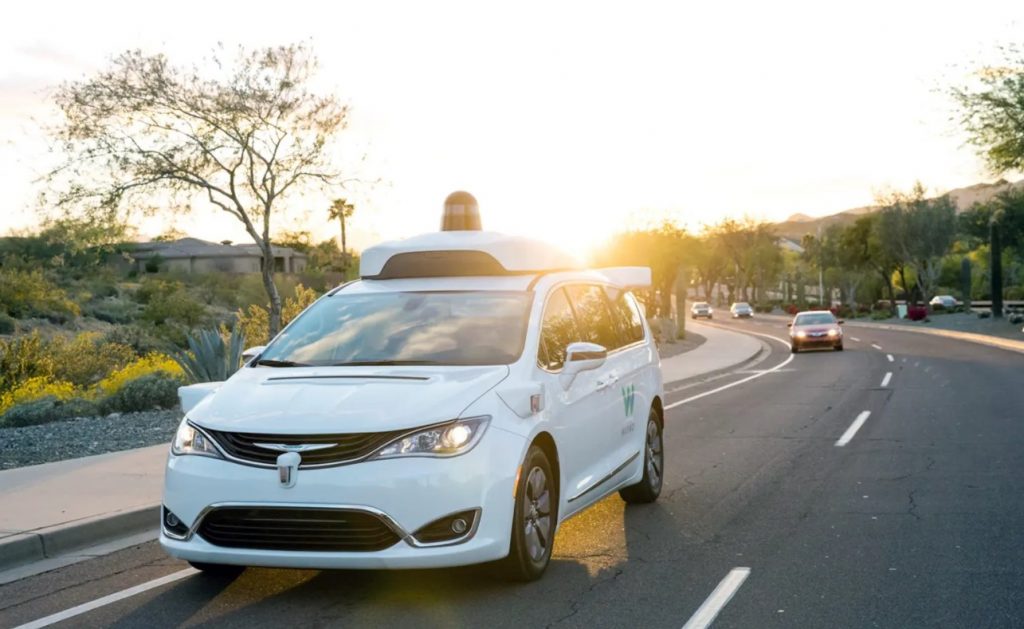
Beginning today, October 8 (US time), Waymo is opening its driverless vehicle service to the public.
After a successful private beta, the company is now confident enough to let everyday people, jump in the car and be driven from A to B, without a driver.
Initially, this service will be limited to the Phoenix East Valley area, but Waymo has plans to expand this to other regions in the future.
Starting with those who are already a part of Waymo One, the next service will expand over the next several weeks to welcome more people directly into the service via the mobile app (available on Google Play and the App Store).


The rides will be 100% autonomous, which means no driver in the driver’s seat just a button to call for help if there was an issue.
Obviously without the cost of a driver, the service should have far lower costs than comparative ride services like Uber or Lyft.
Obviously some people will be nervous initially, as every car they’ve ever been in, there’s also been a human driving. Despite that, Waymo expects the new fully driverless service to be very popular.
There’s definitely likely to be a decent number of tech enthusiasts that will be keen to try it out and as word spreads of the experience of riding in a driverless vehicle (hopefully positive), more will give it a chance.
Waymo doesn’t say how many cars they have in the fleet, but with success, that’s sure to grow.
Now let’s talk about the technology. Waymo has been at this game for more than 10 years. Over that time, they’ve been through many iterations of the technology, currently it’s in the 4th generation.
Waymo relies heavily on lidar in its suite of sensors to achieve this autonomous driving. This scans the environment around the vehicle, then thanks to a database of high definition maps, helps to localise the car in its environment, then makes decisions about how to navigate the environment and route through the world. The 360 video below does a great job of showing this in action.
We can see from the video the car does a great job of accommodating for variances in the environment like cyclists, pedestrians, other vehicles, this all works as a result of the path planning algorithm, being able to leverage the underlying HD Maps of the streets.
This means if the roadway changes significantly, like new roads are added, the environment needs to be re-scanned and the HD map updated before the cars could deal with that change. In a highly populated city, will millions of rides per year, maybe it’s possible to justify the expense of re-building the HD maps often, but in massive parts of the world, that’s just never going to happen.
This presents a massive challenge with an ever changing world and we see that struggle represented by Waymo’s statement about future expansion.
Later this year, after we’ve finished adding in-vehicle barriers between the front row and the rear passenger cabin for in-vehicle hygiene and safety, we’ll also be re-introducing rides with a trained vehicle operator, which will add capacity and allow us to serve a larger geographical area.


This means that any excitement around today’s announcement is definitely tempered by the fact this doesn’t scale. When requesting a ride from the service, you can put in any destination address, but rather only ones Waymo has current mapping data for and have approved for use.
Our progress to autonomous vehicles is really being led by two companies, Waymo and Tesla. Both use very different technology approaches, with Waymo focusing on Lidar and Tesla focusing on computer-vision based learning from cameras.
The massive advantage of the method Tesla has, is that once they train the car to drive itself, it scales immediately and as Musk suggested in a Tweet this morning, can navigate roads it has never seen before.
Autonomous cars are getting closer, but it’s important we understand what we’re seeing here today from Waymo. On the surface, it looks like they’ve solved level 4 autonomy and won the race, but in reality, they’ve solved it in a very specific, very limited way.
Waymo are also buying and configuring each of the Chrysler Pacifica vehicles at a total capital expense to them, while Tesla include the Full Self Driving hardware in each of their vehicles, which the consumer pays for. Tesla will eventually manufacture cars for themselves, for their robotaxi fleet.
This puts them at a fairly big advantage, given they don’t have to pay an OEM + profits for the vehicle, they get the vehicle at cost and does not require retrofitting the hardware, it comes straight off the production line with everything it needs.
Next step, regulatory approval.
